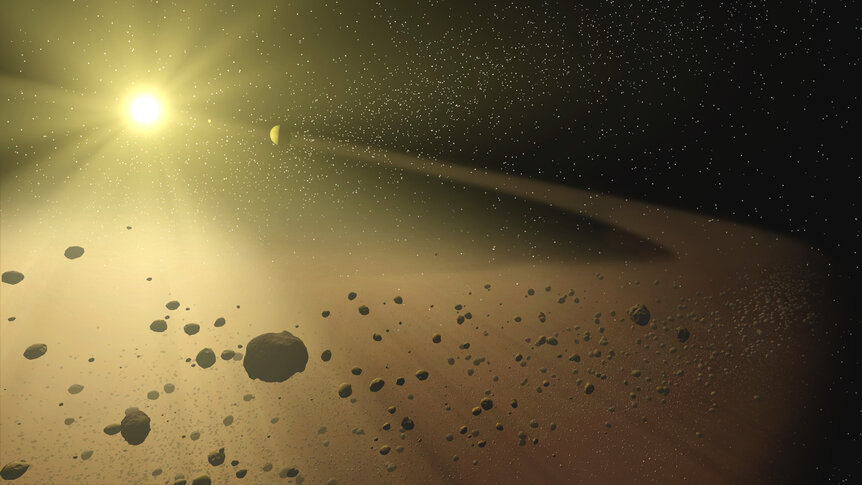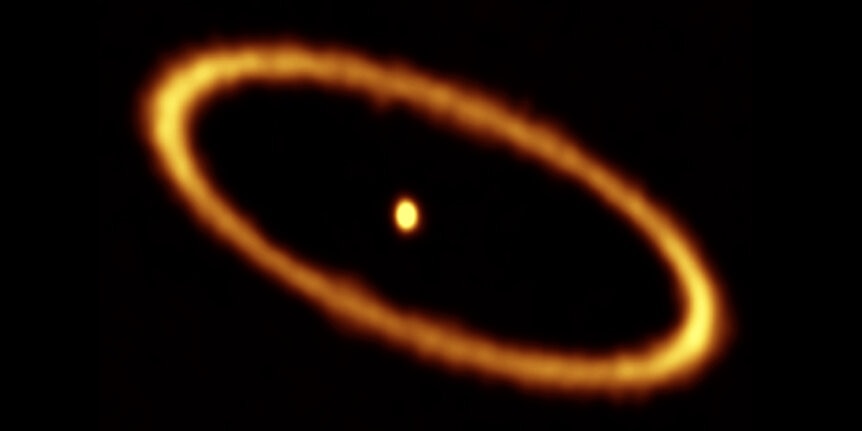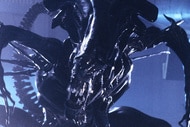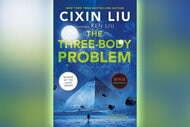Create a free profile to get unlimited access to exclusive videos, sweepstakes, and more!
I'm not saying it's aliens... because it's more likely a dust ring around Tabby's Star causing it to act weird
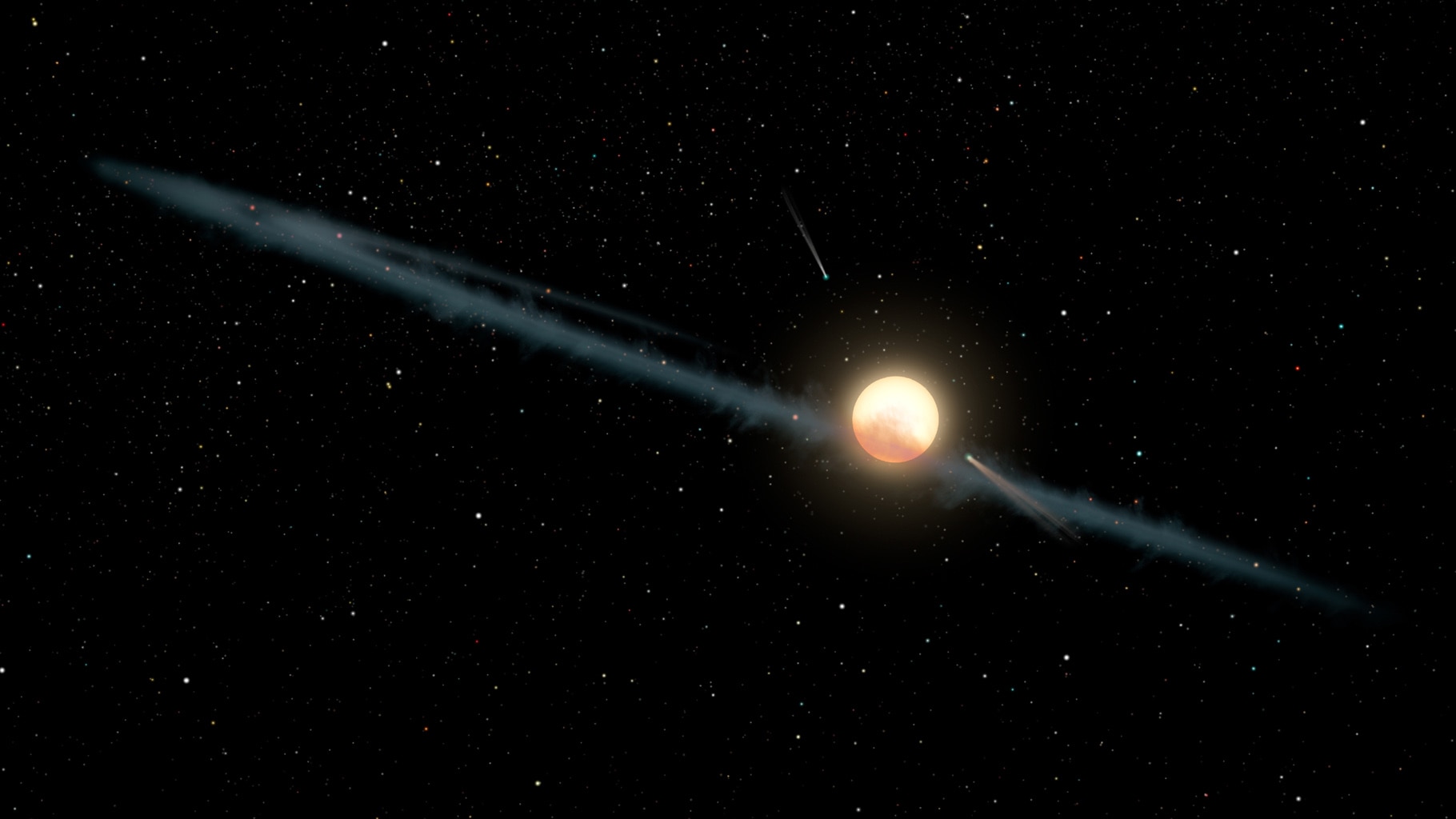
For the first time, we may have a decent explanation of what’s going on with Tabby's Star.
Oh, you know this star: It's the one that's been seen to fade irregularly, sometimes just a little bit for a little while, and sometimes dimming by huge amounts, 20% or more. It's been difficult to envision a single cause that explains all the different effects seen.
Lots of ideas have been proposed: swarms of comets blocking the star light, disintegrating planets, even the star itself consuming a planet or two. Nothing seems to work.
Of course, you've probably also heard that it could be aliens. Or, more accurately, aliens building a huge structure around their star. This purported megastructure could be a Dyson swarm, a bunch of gigantic solar panels designed to power what is presumably the aliens' very advanced civilization. To be clear, no astronomer thinks this is actually what's happening! It's more along the lines of "Huh. We can't rule that out just because it sounds silly, and it's easy enough to test, so why not?" Tests so far have been negative, unsurprisingly.
What's been needed are observations of the star across multiple colors. By looking at the star in visible light as well as ultraviolet and infrared, it can be possible to rule out some ideas and support others.
Those observations have now been done.
And the verdict is: The culprit is likely to be a dust ring around the star.
Disappointed? I'm not. This is pretty cool!
The astronomers observed the star with the NASA Swift satellite (which can see in visible light like our eyes see, as well as ultraviolet), the Spitzer satellite (which sees in the infrared), and a 0.68-meter telescope in Belgium (using visible light). The observations were performed over the course of about a year, from late 2015 to late 2016.
And what they found is pretty interesting: The star faded more in the blue end of the spectrum than the red. This is precisely what you'd expect from dust! What astronomers call "dust" is composed of long carbon-based molecules (essentially soot), or small grains of silicate (rocky) material. Both of these tend to block blue light while letting redder light through — in fact this is very similar to why the Sun looks red when it sets.
If the dusty grains were large, like pebbles or planets or Zornglab's Interstellar Solar Panel Company's products, the blue and the red light would be blocked equally. The blue dimming more really indicates the presence of dust. Incidentally, the astronomers say it's more likely to be dust around Tabby's Star rather than dust in interstellar space between us and it; the characteristics of the two flavors of dust are different, and better explained by material around the star itself (what's called "circumstellar dust").
If the dust were close to the star it would be warm and emit a lot of infrared light. That's not seen (and has been a cause for some consternation for the folks who like the idea of swarms of comets emitting dust in their wake). So either the dust is close to the star and very thinly spread out or it's farther out and thicker.
A single dust cloud won't work, either. Tabby's star exhibits long-term dimming over the past century or so, and these new observations also see the star fading very slightly. Although this new research doesn’t explicitly say how this might happen, a dust ring can cause the dimming by getting very slightly denser over time (perhaps something in the ring is shedding dust), or by subtle orbital changes due to the gravitational influence of a planet.
Putting this all together, it seems very likely there's a ring of dust orbiting the star. To fit the timing of some of the major dimming events seen in Tabby's star, the ring would be a few hundred million kilometers in diameter, so orbiting the star at roughly the same distance Mars orbits the Sun. If the ring is clumpy, then that would explain why we see some small dips and some big ones, and also why they seem to happen on a 700-day period — that would be the orbital period of the ring.
We do see dust rings around other stars, so this too ad hoc, although generally speaking they're seen around much younger stars. I still struggle a bit with the idea of a clump of dust being able to block 20% or more of the star's light, though. That would be a big, dense clump! That's not addressed in this work either, so perhaps others will jump on this.
So this doesn't explain everything, but it explains quite a bit with potential for more, and as far as I can tell does the best job we've seen so far covering as much of the weird behavior of this star as possible. I suspect there will be important details that'll be teased out as time goes on. But the baseline going forward may be to assume we're dealing with a big, clumpy — and natural — dust ring.
Unless the aliens are sloppy with their machinery. Maybe they have space SUVs that are not terribly environmentally friendly. Or a couple of their panels got away from them, collided, and generated a lot of debris. That seems somewhat unlikely, though.
As usual, more observations are needed to figure out what's going on here in detail. That'll happen! It's not just the public that is interested in this star. Astronomers are too, because we love a mystery, especially one as weird as this. It lets us stretch our imaginations, and that's something scientists tend to have lots of.
